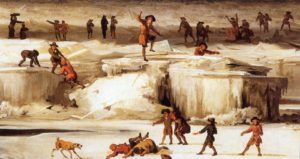by A Watts, September 10, 2009 in WUWT
UPDATED: This opinion piece from Professor Henrik Svensmark was published September 9th in the Danish newspaper Jyllands-Posten. Originally the translation was from Google translation with some post translation cleanup of jumbled words or phrases by myself. Now as of Sept 12, the translation is by Nigel Calder. Hat tip to Carsten Arnholm of Norway for bringing this to my attention and especially for translation facilitation by Ágúst H Bjarnason – Anthony
(…)

by Patti Domm, January 31, 2018 in CBNC
- U.S. crude oil production broke 10 million barrels a day in November for the first time since production peaked in 1970, at the start of a decades long decline.
- The U.S. is the world’s third largest oil producer, and its status is growing. Russia is the largest, with about 11 million barrels a day. The U.S. output rivals Saudi Arabia, which has had production of 10.6 million barrels a day, but currently has cut back due to the OPEC deal with Russia and others to keep supply off the market.
- The U.S. production is expected to expand and could top 12 million barrels a day by the end of 2019, according to Dan Yergin, IHS Markit Vice Chairman.
by Ron Clutz, January 31, 2018 inClimateChangeDispatch
The question could be paraphrased in these words: Why are there differences between various graphs that report changes in global temperatures?
The short answer is: The differences arise both from what is measured and how the measurements are processed. (…)
by P Gosselin, January 31, 2018 in NoTricksZone
Dr. Sebastian Lüning and Prof. Fritz Vahrenholt today here are asking how sea level rise is doing because as have not heard much about it lately. A good place to start is at Climate4You. Strangely the data go only until December 2016. And if you look at the data from the source form the University of Colorado, we find the same. So what’s with 2017?
(…)
by Donald et al. 2017, in CO2Science from Géochim.Cosmochim.Acta
The influence of pHsw on both pHcf and the calcification rate of Neogoniolithon is plotted in Figure 1 below. As indicated there, this coralline algal species is able to elevate its pHcf so as to increase its rate of calcification under moderate levels of ocean acidification (pHsw of 7.91 and 8.05), which increase the authors say is “most likely due to CO2-fertilization of [algal] photosynthesis” that is limited in Neogoniolithon at these lower pCO2 conditions. (….)
La géologie, une science plus que passionnante … et diverse

